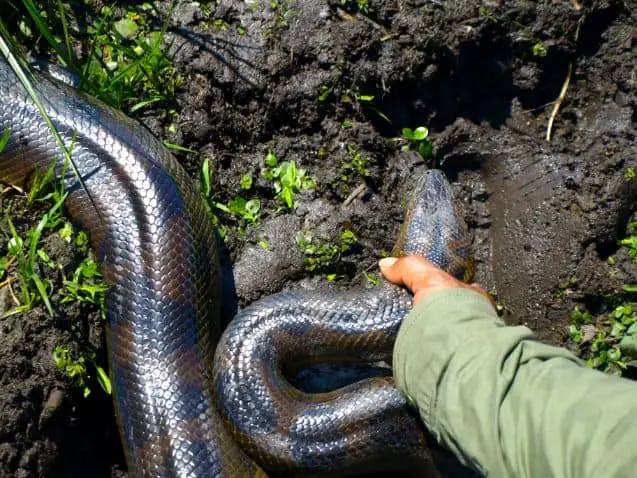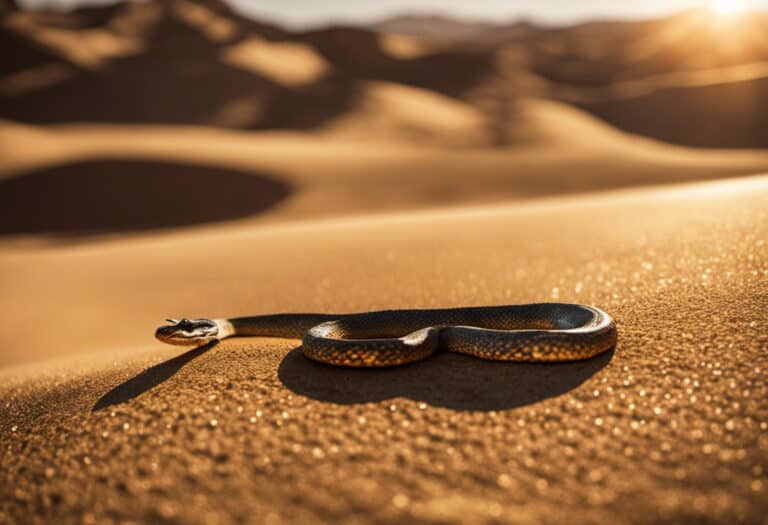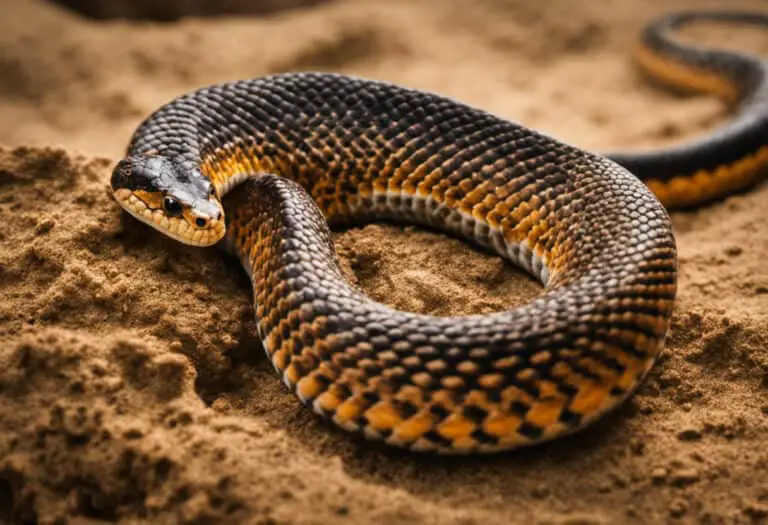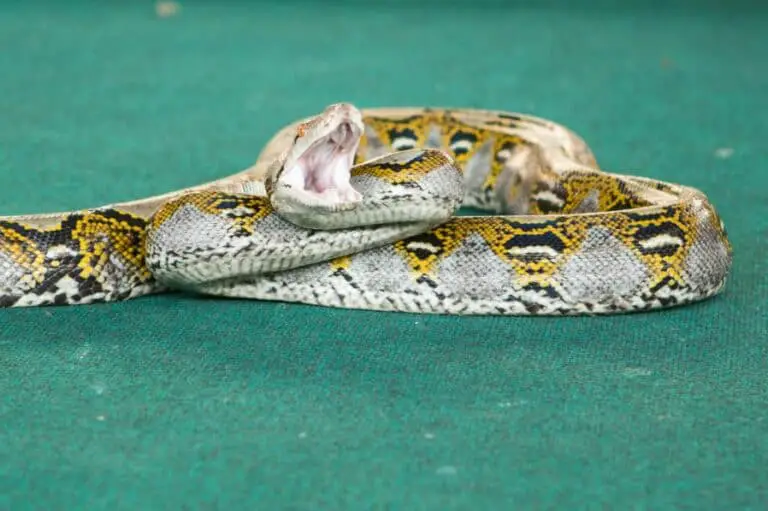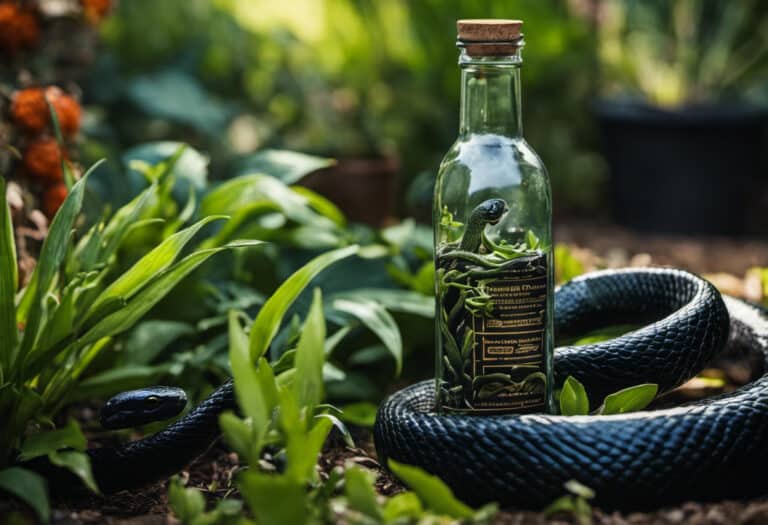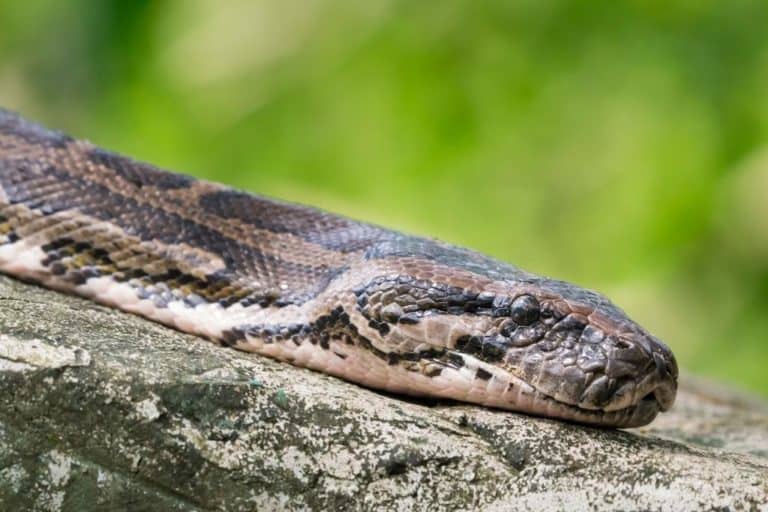Top 9 Best Snakes to Have as Pets
Are you considering adding a snake to your family? Snakes can make excellent pets, but it’s essential to research and find the right snake for you.
We’ve put together this list of the top 9 snakes perfect for new pet owners.
Each of these snakes is relatively easy to care for, and they all have unique personalities and charm.
Whether you’re looking for a docile snake that loves to be handled or a feisty serpent that will keep you on your toes, we’ve got the perfect pet for you.
So read on to learn more about these fantastic creatures and find the ideal snake for your home.
Types of Snakes Easiest to Care For
When you’re new to snake ownership, the best place to start is with a docile and easy-to-care-for snake. Here are our top 9 picks for beginner snakes:
1) Corn Snakes
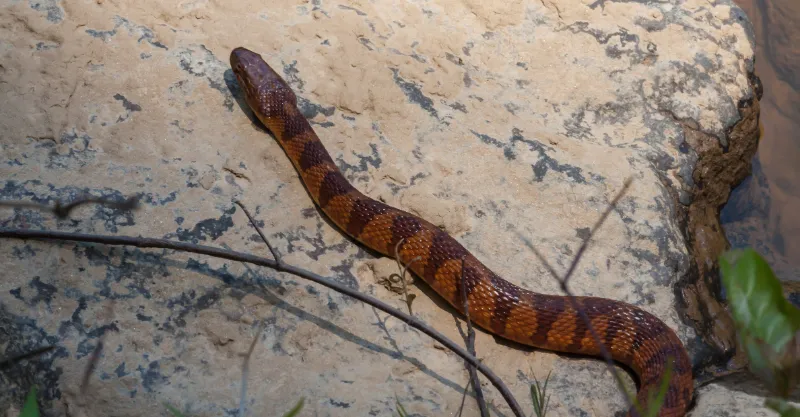
Corn snakes are an excellent choice for a beginner snake owner; they’re docile, easy to care for, and come in various colors and patterns.
As their name suggests, corn snakes are found throughout the eastern United States and make excellent pets. They typically grow to four and five feet in length and can live for up to 20 years.
Corn snakes are carnivorous but can be fed frozen mice or thawed-out chicks. They require a regular water supply and should be housed in an enclosure at least six feet long.
2) California kingsnakes
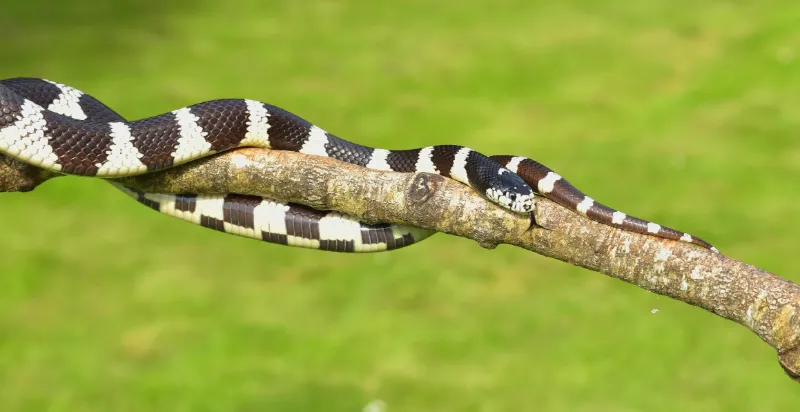
California kingsnakes make great pets for beginners. These snakes typically live around five to seven years, although some have been known to live up to 20 years. They are moderate-sized snakes, reaching up to four feet in length.
The California kingsnake is a constrictor, meaning they don’t have venom like other snakes and use squeezing muscle movements to subdue its prey. While they look intimidating, they are harmless when handled correctly.
These snakes enjoy burrowing, so having plenty of substrates to dig in is essential. They also require a bit more humidity than other snakes (about 50-70% relative humidity), so misting the enclosure regularly and providing hiding spots should help maintain the correct moisture levels.
Most California Kingsnakes come in bright colors like yellow and black or red and black stripes, making them visually exciting pet snakes.
They are relatively inexpensive compared to other pet snakes, making them easily accessible for first-time pet owners!
3) Ball Pythons
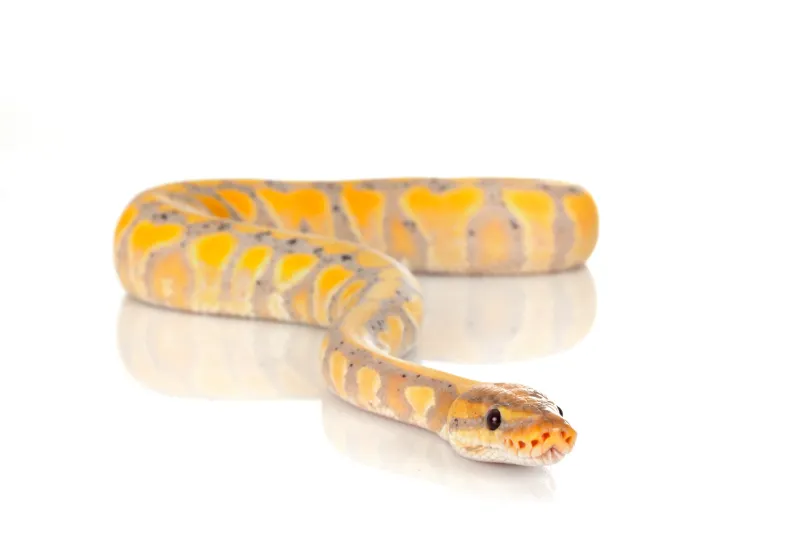
With a reputation for being chill and low-maintenance, ball pythons are growing in popularity as pet snakes.
They rarely bite and tend to stay relatively small, rising to an average size of three to five feet with proper care.
Ball pythons require less space than many other snakes since they remain relatively small, so if you are limited, this could be a perfect breed.
Ball pythons are also more unique-looking snakes with beautiful colors and patterns. They can live anywhere from 15-20 years and are low-cost regarding upkeep.
Make sure to feed them two or three appropriately sized rats or mice every 7-10 days and provide them with a tank of at least 30 gallons or larger with a secure lid.
4) Rosy Boas
If you want to keep a snake as a pet, one of the best choices is the Rosy Boa. These snakes have a docile demeanor and aren’t usually aggressive, making them perfect for new owners.
They additionally have fairly simple care requirements and are relatively small, reaching only 2-4 feet in length when fully grown.
Rosy Boas come with light and dark color variations, from pale pinks to deep reds and browns. Their natural habitat includes the desert regions of Mexico and California, so they do well in large tanks with plenty of hiding spots to give them a feeling of security.
For substrate, consider cypress mulch or shredded aspen wood since these can help keep their environment humid but will also allow for drainage.
Since these snakes are relatively lazy and low-maintenance compared to other species, they make great pets for those who want an easy-going companion around the house.
5) Western Hognose Snakes
Western hognose snakes are another great beginner-friendly snake, and they’re perfect for those who love personality. They’re known for playing dead when they’re scared or threatened, which can be hilarious.
These snakes are found in the western states of the US. They come in gorgeous shades of yellow and brown, with dark spots on their heads that look like horns hence the name hognose!
Western hognose snakes reach about 2 to 3 feet long and can live up to 10 years with proper care. They eat mainly small rodents every 7–10 days and require fresh water daily.
They don’t need a lot of heat since they come from cooler climates, so you won’t have to invest in expensive heating systems or unique lamps.
Just ensure that you keep your pet away from direct sunlight, as they can quickly overheat and become sick.
6) Garter snakes
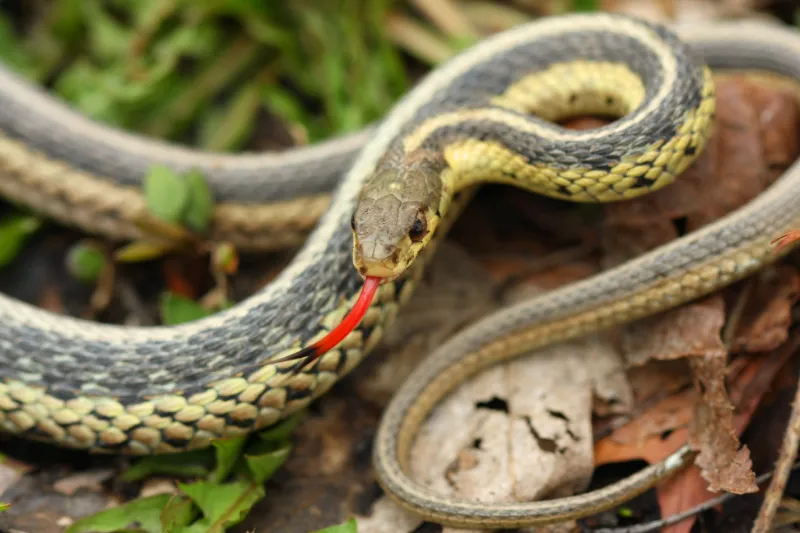
Garter snakes (Thamnophis sirtalis) come in various colors and patterns, making them an excellent pet for any level of snake enthusiast.
They grow to about 2 to 3 feet long so that they won’t take up much space in your home. Plus, they can live up to 10 years when cared for properly.
With proper training and care, garter snakes may learn to take food from your hands. They can also be trained to recognize you and will approach you when you enter their enclosure.
This makes them an excellent pets for beginners still learning to care for reptiles.
Garter snakes are active during the day and prefer warm temperatures – 75-85F is ideal, with a cool side of the enclosure between 60-70F. They enjoy plenty of hiding spots and should have a large water container available.
While they do not require much upkeep, they do need their enclosure regularly cleaned out with fresh substrate added each month.
7) Milk snakes
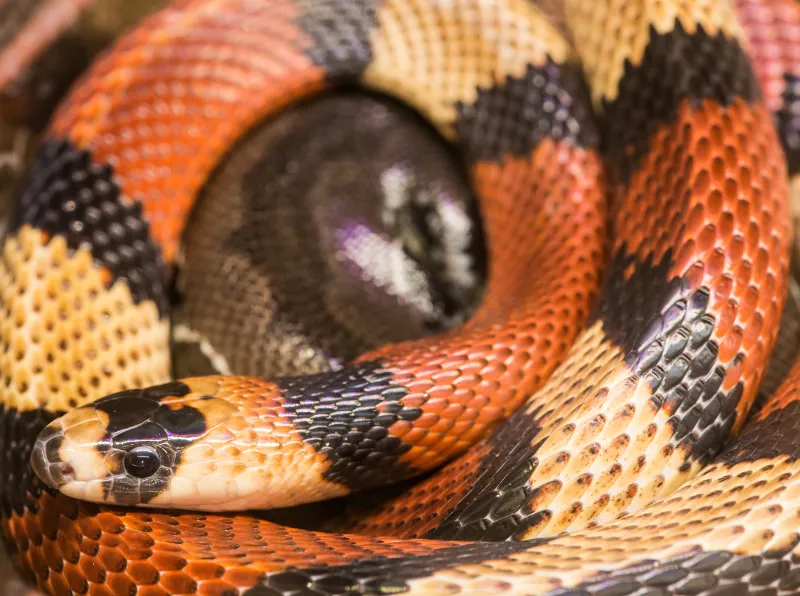
When you think of snakes, the first one that comes to mind is probably a python, but let me introduce you to the milk snake.
These small, nonvenomous animals have vibrant colors that make a stunning addition to your home.
Milk snakes are gentle and relatively easy to care for compared to other pet snakes, making them perfect for new owners.
When you get a milk snake of your own, be sure to provide them with a comfortable enclosure at least three times their size and give them enough hiding places, as they like to hide away in small spaces during the day.
They should also have a UV light and steady temperature controlled by a thermostat.
With proper care, milk snakes can live up to 10 years in captivity and may show affection by gently wrapping themselves around your wrist or neck when handled. What more could you ask for?
8) Gopher snakes
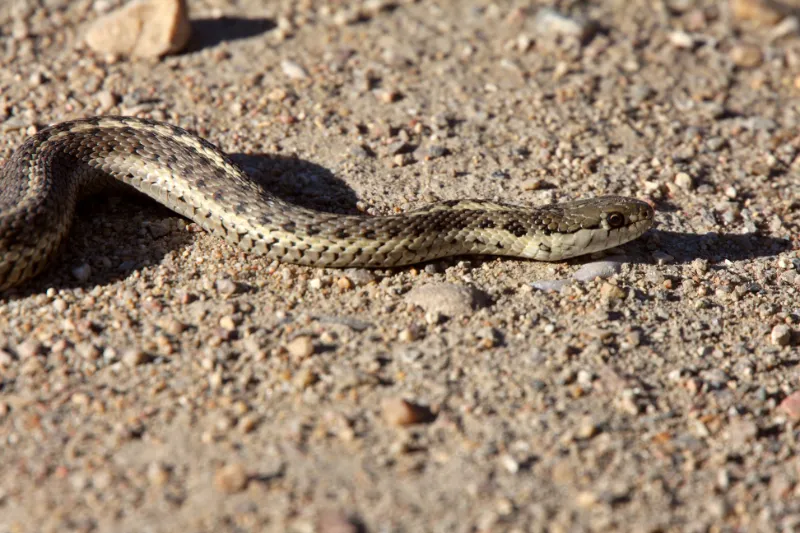
Gopher snakes are a great option if you’re looking for an enormous snake. These snakes can get up to five feet (1.5 meters) long but don’t require as much space as other larger species.
They don’t need any special lighting and enjoy a variety of habitats so that you can create the perfect environment for them.
Gopher snakes are also surprisingly calm and docile, making them perfect for new pet owners. They’re not aggressive and won’t bite unless they feel threatened, so they’re excellent to handle once they get used to being around humans.
They also feed on rodents like gophers, rats, mice, and squirrels, all easily sourced from pet stores, so you won’t have to worry about adjusting your diet.
9) Hog Island boas
Coming in last at number 10 is the Hog Island boa. If you’re looking for a pet that will take up a little of your time but still give you plenty of opportunities for bonding, this snake could be the one for you.
Hog Island boas stay relatively small compared to other snakes (they can reach around 5 to 6 feet in length) and have mellow temperaments, making them an excellent choice for beginners. They’re also very hardy snakes, so they don’t require much special care.
But watch out, Hog Island boas are climbers, so you need to ensure they have their enclosure set up correctly to prevent any unexpected escapes.
Just be sure to provide plenty of hiding places and branches for climbing, and you should be good to go!
Costs Associated With Owning a Pet Snake
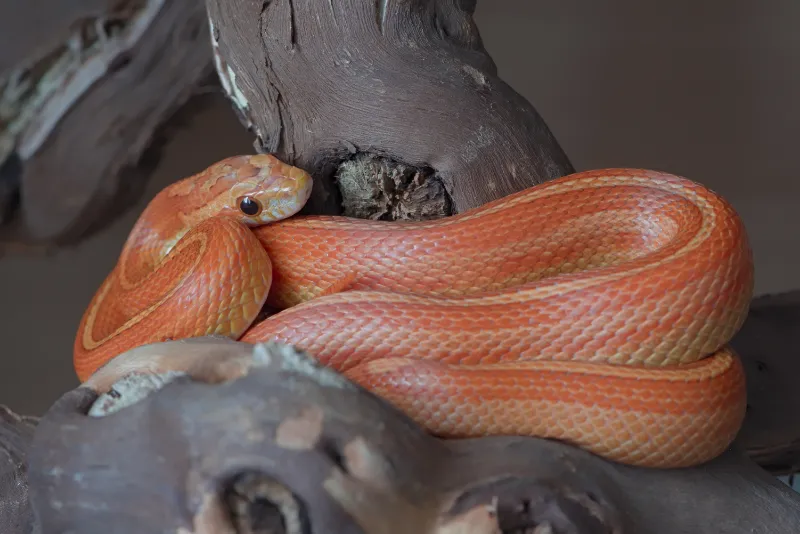
It’s important to remember that owning a pet snake isn’t free and that costs can vary quite a bit. The average price of a pet snake is around $75, but this can range from $20 to over $1000, depending on the type of snake and its rarity.
You’ll also need to include the cost of the enclosure and supplies for it and its food.
Many snakes do fine with lower costs, so if you’re looking for an affordable pet, stick to the more common species, like corn snakes or garter snakes.
Their average price is usually between $30 and $100, making them excellent options for those new to owning snakes.
Supplies Necessary for Caring for a Pet Snake
Making sure your snake has a safe and healthy environment is essential, so picking the right supplies is important.
First, you’ll want to get an adequate-sized tank with enough ventilation. Snakes like a warm, dark place they can hide in and bask in the sun. You should also get some clean bedding and change it out regularly.
Additionally, you should consider adding a secure lid with latches since this help prevents escape attempts.
You should also get a water bowl that’s appropriately sized for your snake, and be sure to change the water every few days to ensure your pet stays hydrated.
Finally, you’ll want to buy hiding spots and decorations that your snake can explore, so it has plenty of stimulation.
By following these tips and taking the time to research, it’ll be easier for you to find the best pet snake for you or your family!
Feeding and Water Requirements for Pet Snakes
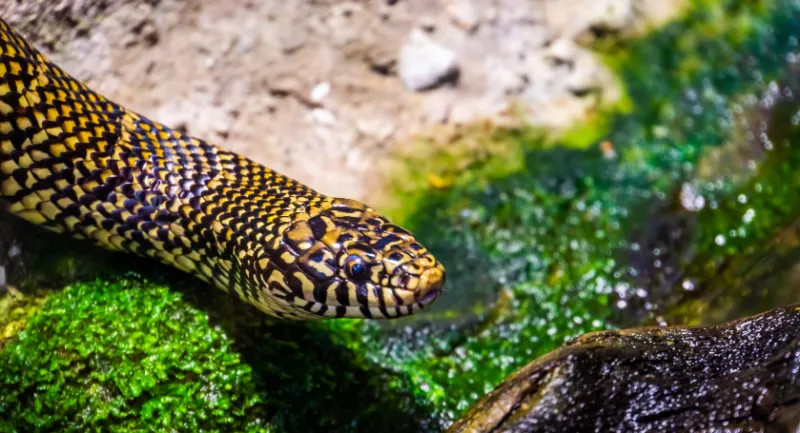
It’s essential to consider your new pet snake’s feeding and water requirements.
Small snakes require feeding at least twice a week, while more significant, fully grown, or mature snakes may only require feeding once a week or every two weeks.
You should look for a species with longevity, care, feeding, and safety requirements that are reasonable for you as a pet owner.
Many pet snakes require a rodent-based diet that relies on pre-killed frozen mice or feeder rats.
Depending on the species, you may need to invest in reptile vitamins and calcium supplements to ensure your pet gets the proper nutrients in its diet.
Water bowls should also be provided for your snake to drink from and soak in when necessary.
Pros and Cons of Owning a Pet Snake
Snakes make excellent pets for those looking for something low-maintenance and docile. But, like any other pet, there are pros and cons to consider before jumping in.
On the plus side, snakes provide many hours of entertainment as they explore their habitat and slither around.
And they do not need to be taken outdoors, which means they are easy to take care of (check out our list above for the low-maintenance varieties).
And if you’re a fan of exotic pets, you won’t find much more exotic than a snake!
However, there are better options than a snake if you want a pet that interacts with you a lot.
Different species require different levels of care, so it’s essential to research and understands what each species needs.
For example, some snakes need UV light for their health and well-being, while others need live food. You’ll also want to ensure that your home is escape-proof if you get a pet snake!
What is the best pet snake for beginners?
If you’re looking for a pet snake, there are several options. However, for those just starting in reptile keeping, the best pet snake for beginners is undoubtedly the Ball Python.
These snakes are typically relatively calm and rarely bite, making them an ideal choice for novice snake owners. They also tend to be quite docile and easy to handle, requiring minimal maintenance.
Additionally, they come in various colors and patterns, allowing you to choose the one that suits your home best.
What snakes are good pets and don’t bite?
You’re in luck if you’re looking for a pet snake that won’t bite! Many snakes are considered gentle and docile, making them ideal for those just starting with reptile ownership.
Hog Island boas, Ball Pythons, California king snakes, Rosy boas, Garter snakes, Brown snakes, Kingsnakes, Corn snakes, Milk snakes, Gopher snakes, and Rat snakes are all good choices for those who want a pet snake that won’t bite.
While no snake can guarantee never to chew, these species tend to be more tolerant of handling and less likely to bite than other varieties. When selecting a pet snake, always buy from a reputable breeder and handle your new pet with care.
Are snakes easy pets?
Are you interested in owning a pet snake but need to know if they’re the right pet for you? Fortunately, snakes can be relatively easy to take care of and don’t require much space.
The key is researching and ensuring you know how to properly care for your pet snake before committing to a purchase. Some snakes, such as corn and garter snakes, are considered the easiest to care for and may be better suited for beginners.
Other varieties, like kingsnakes and milk snakes, are more challenging and may require more experience. Whichever type of snake you decide to get, it’s crucial to provide a healthy diet and proper housing that meets your pet’s needs.
Conclusion
All in all, snakes make great pets for new owners who are responsible and willing to put in the work to care for them.
When choosing a snake, be sure to do your research to find the best species for your individual needs and preferences. With the right snake and care, you’ll have a lifelong friend by your side.
